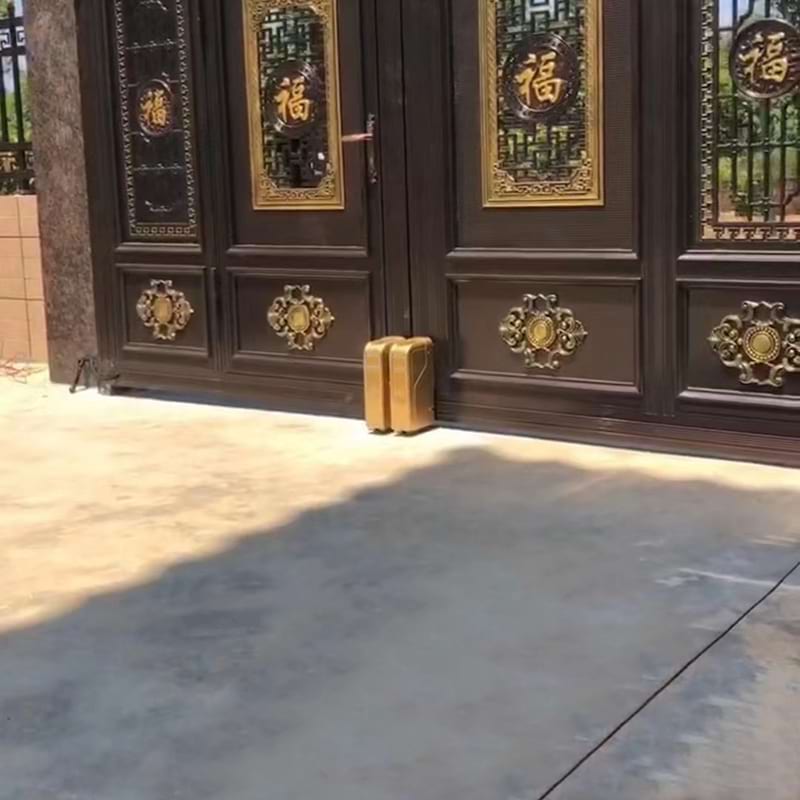Installing an automatic gate opener can enhance the security, convenience, and functionality of your property. While the process may seem daunting at first, it can be straightforward with the right tools, preparation, and instructions. This article outlines the general steps involved in the installation process for an automatic gate opener.

Before starting the installation, ensure you have the following tools and materials:
Screwdrivers (flathead and Phillips)
Wrenches and socket set
Power drill with drill bits
Measuring tape
Level
Post hole digger (if needed for gate posts)
Concrete mix (for securing posts, if required)
Wiring tools (wire strippers and connectors)
The automatic gate opener kit (motor, arms, control box, remotes, etc.)
Safety gear (gloves, safety glasses, etc.)
Choose the Right Gate Opener
Select an automatic gate opener compatible with your gate type (swing or sliding) and its size and weight.
Verify that the opener meets your power source requirements (AC, DC, or solar-powered).
Prepare the Gate and Area
Ensure the gate is properly aligned, level, and free of obstructions.
Check the gate’s hinges or rollers to confirm they are in good condition.
Clear the surrounding area of any debris or objects that might interfere with the gate’s movement.
Install Gate Posts (if necessary)
For gates without existing posts, dig holes for the gate posts using a post hole digger.
Set the posts in concrete, ensuring they are plumb and level. Allow the concrete to cure according to the manufacturer’s recommendations before proceeding.
Mount the Gate Opener Motor
Follow the manufacturer’s instructions to attach the motor unit to the gate or post.
Use a level to ensure the motor is properly aligned.
Secure the motor using bolts or brackets provided in the kit.
Attach the Gate Arms or Chain
For swing gates, attach the opener arms to the gate and motor.
For sliding gates, install the chain or rail system to the gate and motor.
Adjust the arms or chain to ensure smooth operation without excessive tension or slack.
Install the Control Box and Wiring
Mount the control box in a safe, weather-protected location near the gate.
Connect the wiring from the motor to the control box, following the manufacturer’s wiring diagram.
If using a solar-powered system, connect the solar panel to the control box.
Install Safety Features
Attach any safety sensors, such as infrared photo-eye sensors, to detect obstacles in the gate’s path.
Test the sensors to ensure they function correctly and stop the gate when an obstruction is detected.
Connect the Power Source
Connect the gate opener to its power source, whether it’s an electrical outlet, battery, or solar panel.
Ensure all connections are secure and protected from the elements.
Program the Opener
Use the instructions provided with the opener to program remote controls, keypads, or smartphone apps.
Set limits for the gate’s open and close positions to prevent overextension.
Test the System
Operate the gate opener to ensure it opens and closes smoothly.
Check for any unusual noises or resistance and make necessary adjustments.
Verify that safety features, such as obstacle detection, function correctly.
Follow the Manufacturer’s Instructions: Each gate opener model is unique, so carefully follow the installation guide included in your kit.
Consult a Professional: If you’re unsure about any part of the process, consider hiring a professional installer.
Regular Maintenance: After installation, maintain the gate and opener by lubricating moving parts and inspecting components for wear and tear.
Installing an automatic gate opener requires preparation, attention to detail, and adherence to safety guidelines. By following the steps outlined above and using the right tools and materials, you can successfully complete the installation and enjoy the convenience and security of your automatic gate. For complex setups or if you encounter challenges, don’t hesitate to seek assistance from a professional.